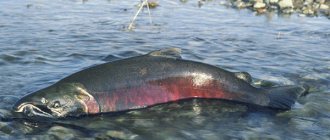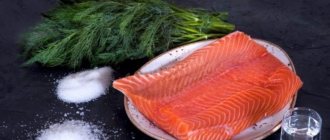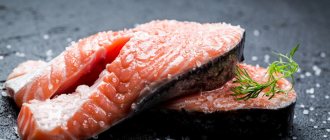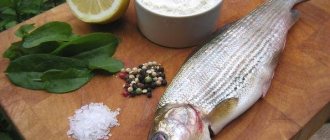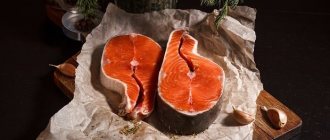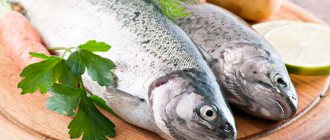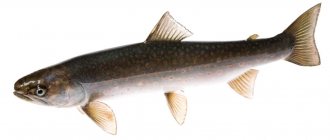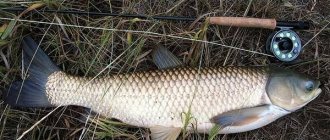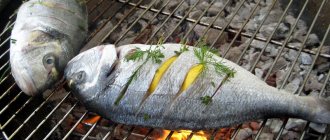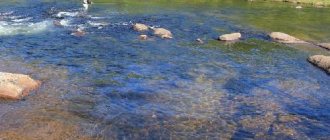The salmon family of fish species has many varieties that have their own names. Each of the representatives of this family has both advantages and disadvantages. Despite this, salmon are of great interest to humanity because they are a source of food. They are caught in huge quantities, and on an industrial scale. This article will talk about coho salmon and sockeye salmon. The features of each of them will be described in sufficient detail here.
What is the difference between coho salmon and sockeye salmon?
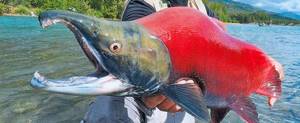
Coho salmon is considered a weighty representative of Pacific salmon and is capable of gaining weight up to 15 kg, with a length of up to 1 meter. This fish has a characteristic bright appearance, which is ensured by its bright, light-colored scales. At the same time, it has a large head, where a large upper part of the mouth and a highly raised forehead stand out.
Moving through the water, coho salmon emits bright white and silver tones. The upper area of the head has a bluish or greenish tint. On both sides of the fish's body there are black spots of slightly irregular configuration.
Sockeye salmon is also a representative of the salmon family, but has less weight and a smaller length: the length can reach 80 cm, and the weight is no more than 5 kg. The appearance of sockeye salmon is closer in shape to such fish as chum salmon, but at the same time it has a smaller number of rakers located on the gills.
Where do coho and sockeye salmon live?
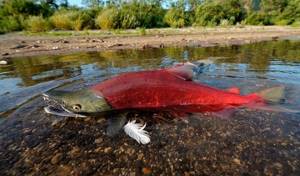
Coho salmon habitat:
- One of the varieties of coho salmon, as a rule, prefers the Asian continent, or rather the Anadyr River. In addition, this fish is also found on Hoidako.
- Another variety of coho salmon is found in huge quantities closer to the North American coast, namely in the Pacific Ocean. Here he prefers the area from the California coast to Alaska. At the same time, it should be noted that North American coho salmon is slightly larger than its Asian counterpart.
- Coho salmon spawn only in the fourth year of life, but freshwater representatives go to spawning grounds already in the 3rd year of life.
- Coho salmon go to freshwater rivers at the beginning of June and this period lasts until December. In this regard, it can be conditionally divided into summer, autumn and winter. Summer coho salmon spawn in August, autumn coho salmon in October, and winter coho salmon in early January. Coho salmon spawn only in rivers and never in lakes.
The habitat of sockeye salmon is as follows:
- Very often it is found near the shores of eastern and western Kamchatka.
- Alaska, the Okhota and Taui rivers are also favorite places for sockeye salmon.
It is also possible to catch sockeye salmon using amateur gear, but only after obtaining permission to do so. The fact is that due to uncontrolled catches of this fish, its stocks have decreased significantly.
Healthful composition of coho salmon and sockeye salmon meat
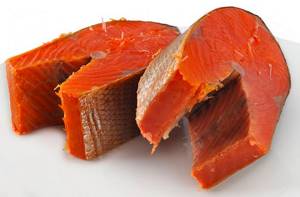
The composition of coho salmon meat includes the following useful elements:
- The presence of vitamins such as B1 and B2 makes coho salmon meat indispensable in any diet.
- It also contains trace elements such as potassium, calcium, chlorine, iron, phosphorus, fluorine and sodium. Without such microelements, normal functioning of the human body is impossible.
- Coho salmon meat can be consumed by everyone, from young to old, but in certain doses. Despite this, coho salmon meat is not considered dietary.
Sockeye salmon meat is distinguished by the presence of the following beneficial substances:
- The following vitamins were found in sockeye salmon meat: A, B1, B2, B12, E and PP.
- In addition to the presence of vitamins, sockeye salmon meat contains microelements: chromium, zinc, potassium and sodium.
- When consuming sockeye salmon meat, the condition of the skin, nervous system and digestive tract is optimized. This meat is good for diabetics as its consumption reduces the amount of sugar in the blood.
- Sockeye salmon meat contains fluorine and phosphoric acid, which help normalize metabolic processes at the cellular level.
Taste characteristics of coho salmon and sockeye salmon
- Coho salmon meat is considered the most delicious and refined. In this regard, it is used in various gourmet culinary dishes, as well as in recipes for housewives.
- Sockeye salmon meat is characterized by a unique, bright taste, especially when it is cooked with a high salt content.
Sockeye salmon or coho salmon, which is better?
The salmon family includes a fairly large group of fish, each of which has its own characteristics and advantages. This article will discuss in detail sockeye salmon and coho salmon, their description and the main criteria for the difference between them. We will analyze which of these fish is fattier, tastier and healthier.
What is the difference between coho salmon and sockeye salmon?
Coho salmon are a type of Pacific salmon. Coho salmon is very large in size, it can reach ninety-five centimeters in length and weigh up to fourteen kilograms. This marine resident has characteristic features that distinguish it from other salmon: bright light scales, a large head with a pronounced upper jaw and a highly raised forehead.
While in the water, coho salmon shimmer with white and silver hues. The top of her head may have a bluish or greenish tint. On both sides of her body there are clear black spots of a slightly curved shape.
Sockeye salmon is a fish that also belongs to the salmon family. The length of an adult individual can reach up to eighty centimeters, and weight up to five kilograms. In its shape, sockeye salmon is very similar to chum salmon, but differs from it in the small number of stamens that are located on the gills.
Habitat and habitat features of coho salmon and sockeye salmon
Coho salmon has the following habitat and habitat features:
- As a rule, coho salmon swim on the Asian coast in the Anadyr River. However, it can also be found on Hoidako.
- It is very common in the Pacific Ocean, especially on its North American coast. Coho salmon swim there from California to Alaska.3. It is important to know that North American coho salmon are usually larger than Asian ones.
- Coho salmon mature for spawning only in the fourth year of life, but in freshwater inhabitants sexual maturation can be observed already in the third year of life.
- Coho salmon swim into freshwater rivers from June to early December, but in some areas they are conventionally classified as winter, summer and autumn. Winter coho salmon usually spawn in early January, summer coho salmon in late August, and autumn coho salmon in early October. This fish never spawns in lakes.
Over 13 years of active fishing, I have found many ways to improve the bite. And here are the most effective:
- Bite activator. Attracts fish in cold and warm water with the help of pheromones included in the composition and stimulates its appetite. It’s a pity that Rosprirodnadzor wants to impose a ban on its sale.
- More sensitive gear. Read the relevant manuals for a specific type of gear on the pages of my website.
- Pheromone -based lures .
You can get the rest of the secrets of successful fishing for free by reading my other materials on the site.
Features of habitat and residence of sockeye salmon are as follows:
- The most abundant sockeye salmon live on the shores of western and eastern Kamchatka.
- In addition, it can also be found in Alaska, the Okhota and Taui rivers.
You can catch sockeye salmon yourself, but only with special fishing permits.
Healthful composition of coho salmon and sockeye salmon meat
Coho salmon meat has the following benefits:
- The meat of this fish contains vitamins B1 and B2, which are storehouses of health and physical strength.
- It contains many useful microparticles, including potassium, calcium, chlorine, iron, phosphorus, fluorine and sodium. This makes this fish incredibly beneficial for human health and his body.
- Coho salmon meat is allowed to be eaten in small portions by everyone, even small children and the elderly, however, it is not dietary.
Sockeye salmon meat is beneficial due to the following properties:
- It has the following vitamins: E, PP, B1, B2, B12, A.
- Contains the following useful microelements: zinc, chromium, sodium, potassium.
- Sockeye salmon meat is very beneficial for the condition of the skin epidermis, nervous and digestive systems. It normalizes blood sugar levels, so it will be very useful for people suffering from diabetes.
- Sockeye salmon meat also contains fluorine and phosphoric acid, which improves the regulation of enzymatic processes and all natural reactions at the cellular level.
Taste qualities of coho salmon and sockeye salmon:
- Coho salmon is a truly delicious and exquisite fish.
Its meat is one of the most tender and pleasant among all salmon fish, which is why it is actively used in the culinary arts for preparing a wide variety of recipes both at home and in restaurants. - Sockeye salmon meat has a rich, specific taste, especially when it is cooked with a lot of salt.
Contraindications for eating coho salmon and sockeye salmon
It is undesirable to eat these types of fish if you have the following diseases:
- Gastritis.
- Cholecystitis.
- Stomach ulcer.
- Hepatitis.
- Kidney failure.
- Liver diseases.
- Individual intolerance to fish and allergies to it.
Having caught 237 kg of fish, the poachers were not punished!
During interrogation, the detained fishermen revealed the name of the secret bait. Read more…
Also, you should not eat these fatty fish in the last stages of pregnancy and when breastfeeding a child.
Which fish is fattier - sockeye salmon or coho salmon?
Coho salmon meat (one hundred grams) has forty-eight percent fat content. Sockeye salmon meat contains forty percent fat, which suggests that coho salmon, although not much, is still fattier than sockeye salmon.
What is better - sockeye salmon or coho salmon caviar?
Sockeye salmon caviar has a rich red color and is medium in size. When salted, it is quite tasty, but bitterness still prevails in it.
Coho salmon caviar has a small diameter - only four millimeters. In its raw form it does not have a pronounced taste, but when combined with salt it acquires a very pleasant taste. Externally, it has a slightly orangish tint. Based on the reasoning of gourmets, this caviar exceeds the taste characteristics of sockeye salmon caviar.
Methods for preparing coho salmon and sockeye salmon
Coho salmon can be prepared in the following ways:
- Grill over a fire (in the form of fish kebabs). Having tried this dish just once, many people refuse to eat meat shish kebab and cook it exclusively from coho salmon.
- Coho salmon steak on the grill or in the oven.
- This fish can also be boiled, salted, fried, canned and smoked.
Sockeye salmon is best prepared in the following ways:
- Smoke. In this form it is especially tasty.
- Salt (salt must be added strictly according to the recipe, otherwise the sockeye salmon will lose its taste).
- Bake.
- Steam.
Consider cooking a grilled coho salmon steak:
To prepare this recipe you will need:
- dry white wine or champagne;
- coho salmon steak;
- salt;
- red pepper;
- spices and aromatic herbs.
- Cut fresh coho salmon into steaks across the body. The steaks should be at least three centimeters thick, otherwise the meat will be dry. Also, do not throw away the tail and head of the fish, as they can be used to make an excellent rich fish soup.
- Gently rub the steaks with the spices and place them on the hot grill.
- Cook for ten minutes. You need to turn the fish frequently so that it cooks evenly.
- During cooking, it is recommended to pour wine or beer over the steaks so that they absorb the desired aroma and acquire more flavor.
- When the fish is ready, you also need to sprinkle it with a little lemon juice to add freshness and citrus fruit flavor to the meat.
It is recommended to serve this dish with a green salad, tomatoes and herbs. In addition, the fish can be washed down with the wine with which it was sprinkled. It is better to eat such steaks warm, while they are still warm.
Recipe for making coho fish soup
The recipe for making coho fish soup is also not very complicated. For it you should prepare the following ingredients:
- coho salmon (preferably freshly caught, but frozen will do);
- potato;
- onion;
- salt;
- pepper;
- semolina;
- Bay leaf;
- carrot;
- parsley;
- dill.
The process of preparing fish soup is as follows:
- Clean the coho salmon and wash under running water. Remove the entrails and wash again in water.
- Cut into small pieces (the head and tail can also be safely thrown into the broth).
- Boil three liters of water. After that, throw the fish into it and cook for half an hour over low heat.
- Meanwhile, peel three potatoes, three onions and one carrot.
- Cut the potatoes and onions into small cubes and add to the broth.
- Carefully grate the orchard on a coarse grater and also add to the fish soup.
- Pour half a glass of semolina into the broth (it is needed to make the soup more rich and thick).
- Season with pepper and salt to taste (it is important not to overdo it with salt, otherwise the soup will be too rich).
- Five minutes before removing from heat, add a little bay leaf. Also, carefully add a bunch of finely chopped parsley and dill into the pan.
- After cooking, it is recommended to let the fish soup sit for about twenty minutes so that it absorbs the aroma of fish and spices even more.
This dish should be served with warm vegetables and herbs. Bon appetit!
Conclusion
At fish markets, the price of coho salmon is almost three times higher than that of sockeye salmon, which indicates greater demand for it. When choosing the best of these fish, it must be said that most nutritionists are confident that coho salmon contains a greater amount of useful microelements, and its meat is more tasty than sockeye salmon.
I caught this carp using a bite activator. Now I never return home without fish! The time has come for you to guarantee your catch!!! The best bite activator of the year! Made in Italy…
MORE →
You may also like
Source: https://bolshoyulov.ru/nerka-ili-kizhuch-chto-luchshe/
Contraindications for eating coho salmon and sockeye salmon
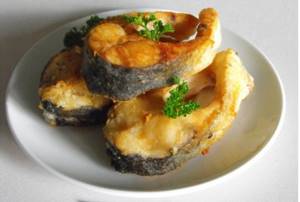
Despite their exceptional benefits, coho and sockeye salmon meat is not recommended for consumption by certain categories of people who have health problems. For example:
- In the presence of gastritis.
- In the presence of cholecystitis.
- For stomach diseases.
- For hepatitis.
- In the presence of renal failure.
- For liver diseases.
- For allergies and personal intolerance to fish meat.
It is not recommended to consume fatty fish for women in the last stages of pregnancy, as well as when breastfeeding.
Sockeye salmon and coho salmon in our store
In our store you can purchase high quality fish and caviar. If necessary, we will provide a receipt, certificates of conformity and purchasing documents. Unlike many stores, we store seafood at optimal temperatures from -2 to -4 °C. Thanks to this, our products retain their beneficial properties.
It’s easy to buy coho salmon and sockeye salmon in our online store:
- mark the products you need and add them to your cart;
- fill out the order form;
- choose a convenient payment method;
- wait for delivery;
Buy fresh seafood from Sakhalin and Kamchatka on our website!
The Salmon family includes many different species of fish. They all have their own names, and some are so similar to each other that they are often confused. Be that as it may, Salmon are a source of food and are of great interest in this regard. To figure out which is better, sockeye salmon or coho salmon, you should compare the taste qualities of both fish. These are classic representatives of this family.
Coho salmon or sockeye salmon: which fish is fattier?
100 grams of coho salmon meat contains up to 48% fat, and the same 100 grams of sockeye salmon meat contains 40% fat, which is not much, but less. Therefore, we can safely say that coho salmon meat is fattier.
Coho salmon and sockeye salmon caviar: which one is tastier?
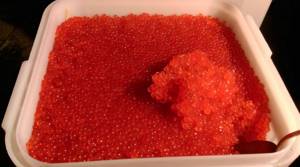
Sockeye salmon eggs are of medium size and are characterized by the presence of a bright red hue. If you salt sockeye salmon caviar, it will turn out quite tasty, but it will contain bitterness.
Coho salmon eggs are smaller in size and, when raw, do not have a pronounced taste. If you salt it, then together with the salt, the caviar acquires a delicate, pleasant taste. Externally, coho salmon caviar is paler and does not have a bright color. Based on the opinions of lovers and connoisseurs of this product, coho salmon caviar has a more pleasant taste compared to sockeye salmon caviar.
How to distinguish between sockeye salmon and coho salmon
Salmon fish meat contains many useful substances and has excellent taste. But still, coho salmon and sockeye salmon have a number of differences.
Sakhalin and Kamchatka sockeye salmon is a valuable commercial product. Migratory fish live for about 5 years in sea water and then enter lakes to spawn. Residential sockeye salmon, or kokanee, live in fresh water bodies. Average individuals grow up to 80 cm in length, and their weight reaches 3.5 kg. Sockeye salmon fillets are easily recognized by their rich red color.
Coho salmon is a large fish that the Japanese call silver salmon. Its weight reaches 14 kg, and its length is 1 m. According to the time of spawning, summer, autumn and winter coho salmon are distinguished. The fish fillet has a rather bright coral or pink color.
Recipes for coho salmon and sockeye salmon
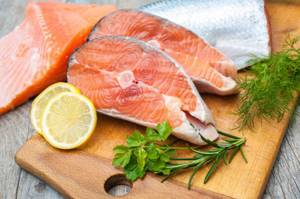
Coho salmon is prepared using the following technologies:
- It can be grilled over a fire like kebabs. Many kebab lovers, having tried coho salmon prepared using this technology, prefer not meat kebab, but coho salmon kebab.
- Cooking coho salmon steaks in the oven or on the grill.
- In addition, coho salmon is quite tasty when salted, pickled, canned, smoked or simply boiled.
Cooking sockeye salmon is possible in the following ways:
- Sockeye salmon is exceptionally tasty when smoked.
- It is no less tasty when salted. At the same time, the amount of salt should be optimal and strictly correspond to the recipe.
- Sockeye salmon must be baked.
- It is recommended to steam it as well.
Grilled coho salmon steaks
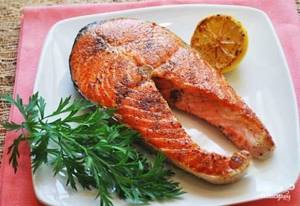
To do this, you need to stock up on the appropriate ingredients. For example:
- You will need dry white wine or champagne.
- You will need coho salmon steaks.
- Salt.
- Red pepper.
- Seasonings.
COHO PALM ON GRILLED PAN
How to prepare:
- Prepare steaks from coho salmon by cutting it across the carcass. Their thickness should be at least 3 cm, otherwise they will not turn out juicy. The head and tail of coho salmon make the most delicious and healthy fish soup, so you shouldn’t throw them away.
- The steaks are carefully and carefully rubbed with seasonings, after which they are placed on the grill.
- Steaks cook in about 10 minutes. During the cooking process, the fish meat is regularly turned over.
- After cooking, the steaks are irrigated with lemon juice, which refreshes the taste of the fish.
- This dish is served with herbs and vegetables. In addition, it is recommended to drink it with wine of the same brand that was used in the preparation process. It is preferable to eat steaks warm, as they are much tastier.
Coho salmon soup

As mentioned above, it is advisable not to throw away the head and tail, because they can be added to the ear. This dish can also be cooked from whole fish: there is no particular difference in the cooking technology. It’s just that using a whole coho salmon carcass will add more meat to the soup.
To prepare fish soup you need:
- Coho salmon carcass.
- Potatoes.
- Onion.
- Pepper.
- Salt.
- Semolina.
- Bay leaf.
- Carrot.
- Parsley.
- Dill.
Coho salmon soup
How to cook fish soup: sequence of actions:
- The coho salmon carcass is cut up and washed with running water.
- The carcass is divided into suitable pieces.
- Take 3 liters of water, put it on the fire and bring to a boil. After this, the fish is placed in a container with this water and cooked over low heat for about 30 minutes.
- While the fish is boiling, prepare the vegetables: take 3 potatoes, three onions and one carrot.
- Potatoes and onions are chopped into cubes and added to the broth.
- The carrots are chopped on a grater and also added there.
- To make the dish more thick and satisfying, add half a glass of semolina.
- The fish soup is peppered and salted to taste.
- 5 minutes before complete readiness, add bay leaf, as well as chopped dill and parsley.
- Once the soup is cooked, most lovers of this dish recommend leaving it for half an hour to let it brew.
Ukha is eaten with herbs and only warm. That's how it tastes the most.
Cooking methods
Salting: This is a win-win method for all red fish. The simplest one is 1 tbsp. sugar and 2 tbsp. salt per kilogram of fish. We covered the fillets with this mixture, covered them with film, waited a day - and the lightly salted fish was ready.
Continued: Salting red fish →
Steam: trout, pink salmon, salmon, and sockeye salmon cook well in a steamer. Then you can make a salad out of them, pour sauce over them, and prepare an appetizer.
Make soup : in principle, all salmon are suitable for this. It’s just a shame to let Chinook salmon into soup.
Make cutlets: in combination with other types of fish, more fatty, chum salmon, coho salmon, and pink salmon will be used for cutlets.
Article on the topic
Smoke, fish, big and small.
Useful cooking tips Make a salad: Lightly salted fish and smoked fish are perfect for this.
You can make salads with them with herbs and a small amount of sauce. If the fish is steamed or baked, it is better to make a salad with mayonnaise if the fish seems a little dry to you. Fry: It is safest to fry the salmon. Steaks are taken from the middle, which is the fattest. It is best to properly bread the steaks; one of the good options is ground sesame seeds or nut flour. You can make a paste from them by adding oil and thoroughly coat the steaks. You can make the breading by “sticking” it onto the whipped egg white. Just dip the fish in the egg, then roll it in breading.
Bake: Salmon and trout are great for this. It is best to bake in foil, placing herbs in the belly of the fish and coating the back and sides with oil. You can also make steaks, wrap each of them in foil and put them in the oven.
Smoking : If you have a smokehouse and a lot of fish, then this is the best way. Sockeye salmon is especially suitable for smoking; pink salmon, salmon and trout are good; Chinook salmon is excellent. The fish needs to be separated from the bones, covered with salt for several hours, and then the salt is washed off and smoked on alder chips.
Stew: In a small amount of water with a tasty fatty sauce, creamy is good, but you can come up with another, almost any salmon works well. By the way, boiled or lightly salted fish can be pureed and made into a sauce. For vegetables or pasta - just perfect.
Coho salmon fish: photo and description
[adsp-pro-2]
Coho salmon are a fish that live along the Pacific coast. The individual has silvery scales, which is why it is sometimes called “silver salmon.” The average life expectancy is about 5 years; it is noteworthy that only at the age of 4 years does the fish reach sexual maturity, and before that it lives in rivers and feeds on plankton and small fish.
To spawn, the fish goes into rivers and winters in the seas and oceans. In Russia, it is most often possible to catch coho salmon up to 90 cm in length and weighing no more than 7 kg. North American individuals are generally slightly larger (the average length of fish there is more than a meter, and the weight of large individuals is from 14 kg).
Differences between caviar of different fish
The most famous and beloved varieties of salmon delicacies are red caviar from chum salmon, pink salmon, sockeye salmon and coho salmon. Each of them has a number of its own characteristics - size, taste, value. Having looked at this in more detail, you can see what their differences are.
Chum salmon caviar
The eggs of this species are large in size. They resemble regular-shaped balls with a diameter of up to 7 mm. The color is orange, usually uniform. The shell is strong. It takes effort to break it, so the product retains its shape for a long time. Chum salmon caviar is distinguished by its delicate taste. There may be a slight bitterness, which does not spoil its taste at all.
The caviar of the individual is bright red. The taste features are piquant and slightly spicy. The diameter of one egg is up to 4 mm.
The delicacy contains many B vitamins and also contains easily digestible protein. The calorie content of caviar is higher than the fillet itself - about 270 calories; the delicious product can be stored at a temperature not lower than - 6 degrees.
Fish habitats
When talking about trout, people often combine any species of fish belonging to the salmon family and living in freshwater bodies. In fact, this group includes many species. These are char fish, characterized by their small size, chum salmon, and chinook salmon.
The habitats of coho salmon may vary depending on the specific species. The Japanese and Americans call it Silver Salmon. In Asia, or more precisely, in the Anadyr River, other species live. Sometimes you can find such fish in Hokkaido. Far Eastern coho salmon are found in Kamchatka.
Another species is concentrated in large numbers near the coast of North America on the Pacific Ocean. Here it can be found from the coast of California all the way to Alaska. North American coho salmon, which live near the North American continent, are much larger in size compared to their Asian counterparts.
Coho salmon spawn in their fourth year of life. Freshwater species are ready to reproduce already in the third year of life. Coho salmon move to freshwater bodies in early summer. Spawning continues until December. Depending on the timing of spawning, this fish can be divided into several varieties . These are summer, autumn and winter species of coho salmon.
Summer hybrids spawn in August. Autumn ones begin breeding in mid-autumn, and winter ones - in early January. You will never see coho salmon in the lakes during the spawning period. During this period it is always present in rivers.
Sockeye salmon most often lives in various parts of Kamchatka. Also her favorite territories are:
To catch sockeye salmon, standard amateur gear is used. But in order to go hunting for this predator, you must obtain appropriate permission from government authorities . In recent years, uncontrolled fishing of this fish has led to a decline in its population.
Healthy and tasty recipes
Coho salmon can be grilled on a grill, similar to kebabs. Many lovers of meat shish kebab, having tried this dish, prefer the latter. This fish is quite tasty when salted. But you can also smoke, marinate and even boil such fish. Gourmets prefer to cut the fish into steaks and bake it on the grill.
Sockeye salmon is also quite tasty if you smoke it. It is also quite tasty when salted. But here it is important to strictly follow the recipe and select the optimal amount of salt. Sockeye salmon can be baked and steamed.
To make steaks from coho salmon, it is cut across the carcass. The optimal thickness of the pieces is at least 3 cm, otherwise the fish will lose the essence of its taste. The tail and head are used to prepare fish soup, so they are never thrown away.
Rub the steaks with a mixture of salt, red pepper and other seasonings to taste. After this, place them on the grill and leave for 10 minutes. The fish must be turned regularly during the process. It is also important to periodically drizzle the pieces with lemon juice for a fresher taste. The finished dish is served to the table with vegetables and herbs. You can serve it with champagne or dry white wine.
The head and tail are washed under running water and filled with three liters of water. Bring to a boil, then reduce heat and continue cooking for another 30 minutes. At this time, vegetables are prepared.
To prepare fish soup you will need 3 large potatoes, 1 medium carrot and 3 onions. They are crushed, cut into cubes and added to the broth. You don’t have to cut the carrots, but grate them.
To make the soup more satisfying and thick, some housewives add half a glass of semolina to the broth, but you don’t have to do this. By the way, in addition to the indicated parts of the fillet, you can cook the whole fish for fish soup. Pepper and salt are added to taste. And also a few minutes before readiness, add bay leaf and chopped parsley and dill.
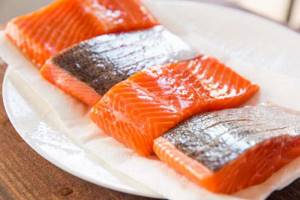
You should not immediately serve the fish soup as soon as it is cooked. Gourmets recommend leaving it for half an hour. Thanks to this, the soup will be thoroughly infused and will contain much more extractive substances that improve appetite. Ukha is always served warm with greens.
Coho salmon is in greater demand than sockeye salmon. Evidence of this is also the cost of these fish in the markets. Coho salmon is three times more expensive than sockeye salmon fillet. Therefore, if you have the appropriate financial capabilities, it is better to opt for the first option. Many nutritionists claim that coho salmon is more beneficial than sockeye salmon.
